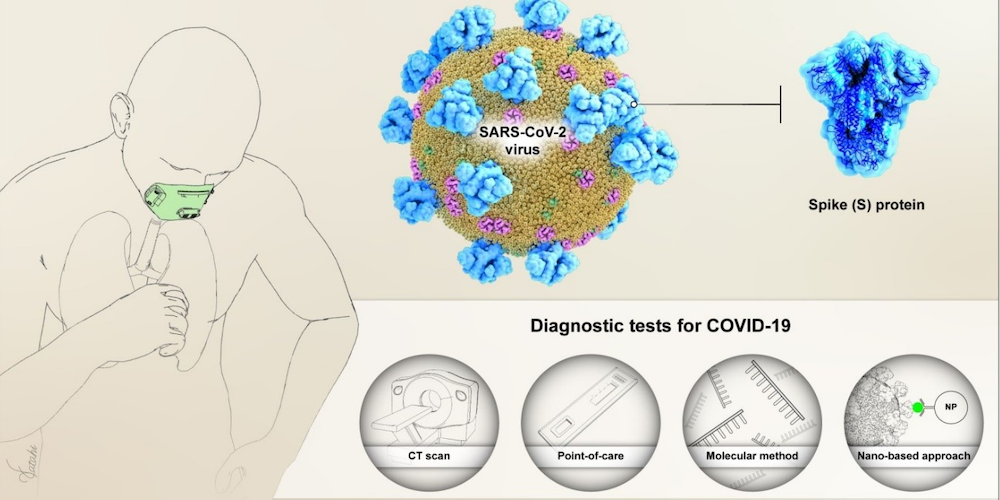Indian Scientists Devise a New method of visual detection of SARS-CoV-2

A new sandwich based lateral flow immunoassay (LFIA) for the detection of Receptor Binding Domain (RBD) of severe acute respiratory syndrome-coronavirus-2(SARS-CoV-2) could provide an efficient substitute for RT-PCR tests. It can detect the RBD antigen of the SARS-CoV-2 at an early stage of infection with a visual line of detection (LOD).
Popularly used gold standard techniques such as RT-PCR and ELISA are usually time-consuming, require skilled labor, specific equipment and are not feasible for on-site detection.
In order to overcome this challenge, a team of researchers from DBT-National Institute of Animal Biotechnology (NIAB) and Gandhi Medical College developed a rapid and robust platform for early and on-field detection of SARS-CoV-2 virus. A smartphone app (Color grab) has been used for the qualitative analysis of the test strip. The developed LFIA working on the principle of antigen-antibody interaction holds the potential to be used for detection of SARS-CoV-2 without any requirement of skilled personnel and subsequently reduce the spread of the virus.
With support from Science and Engineering Research Board (SERB), an institution of the Department of Science and Technology (DST) the scientists came together to clone the gene responsible for RBD protein expression, and purify it to generate the antibody(Ab). The generated antibodies were then conjugated with monodisperse gold nanoparticles (AuNPs) to be used as a capture probe for colorimetric detection.
The fabricated LFIA works in a sandwich format, where the RBD target analyte in the sample interacts with the gold nanoparticle conjugated RBD antibody to form a complex (AuNPs-Ab), which further moves along the nitrocellulose membrane and reacts with the RBD antibody coated as test line on the membrane to form a red colour band.
The RBD Ab and IgG secondary Ab were coated on the nitrocellulose membrane as test and control, respectively to test the presence of antigen (Ag) in the sample. Further, the excess antibody bonded with the control line coated with a secondary IgG antibody validating the functionality of the test strip. An absorbent pad was placed at the end of the strip to prevent backflow across the strip.
The presence of band colour at test and control line indicates a positive result whereas a single line in control indicates a negative result. Depending on the target analyte, various parameters such as blocking buffer, antibody conjugation concentration, and antibody coating concentration on the membrane have been optimized to obtain band color with maximum binding efficiency. The band intensity of the test line was analysed using a simple smartphone-based application for image acquisition and analysis of the test line color, which can split any color data into its three primary color components — red, green, and blue (RGB data). The specific color component shows the trend of increasing or decreasing intensity of color. This study was published in the Journal of Medical Virology recently.
The developed LFIA strips can be useful as a portable, point of care device (PoC) for on-site detection of SARS-CoV-2 particularly at home or even in rural areas. Moreover, the cost of LFIA strips is much less as compared to standard RT-PCR test making it a more economical option for people who cannot afford the RT-PCR test.



